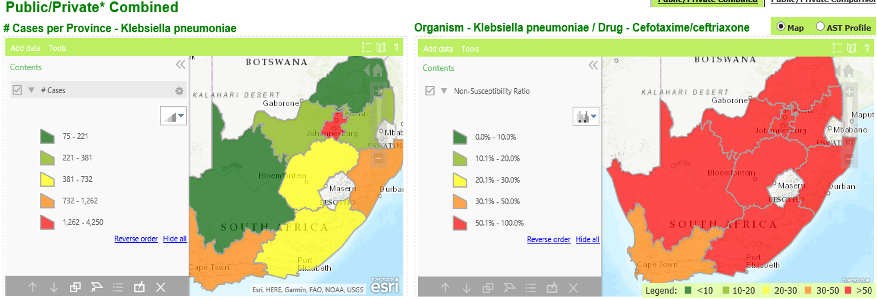What is Antimicrobial Resistance ?
Antimicrobial resistance occurs when microorganisms (germs) become resistant to antimicrobial agents. An antimicrobial is an agent that kills microorganisms or stops their growth. Antimicrobial agents that act against bacteria are called “antibiotics”, and those that act against fungi are called “antifungals”. As antibiotics and antifungals are used and in some cases, misused, resistance results. This reduces the types of antibiotics that are available for treatment of infections. Causes of antibiotic resistance include the over-prescription of antibiotics, incorrect duration of treatment, lack of hygiene and poor sanitation, poor infection control practices in hospitals and clinics and the over-use of antibiotics in livestock and fish farming.
Antimicrobial resistance maps
Antimicrobial resistance is a key public health concern that threatens the management of severe clinical infections both locally and globally. The emergence of multi-drug resistant organisms (MDRO) classified within the ESKAPE group of bacteria have important clinical implications for treatment. Surveillance is conducted to determine the magnitude and pattern of resistance. Data are obtained electronically from both public and private laboratories from blood samples and we exclude duplicate cultures within 21 days. Surveillance data are updated yearly.
These antimicrobial susceptibility data can be used to guide empiric treatment for hospital- associated infections in each facility. Definitive therapy is based on the findings of laboratory results for the individual patient. Empiric antimicrobial treatment should be guided by the prevalence of resistance and by the antimicrobial stewardship program at the facility.
Each hospital should pay attention to the occurrence of these pathogens and their resistance trends and implement strict infection prevention and control measures. For additional information, refer to the Facts on Antimicrobial Resistance Surveillance.

*We would like acknowledge the Surveillance Information Management Unit (SIMU) for generating the data & maps on NICD dashboard.

